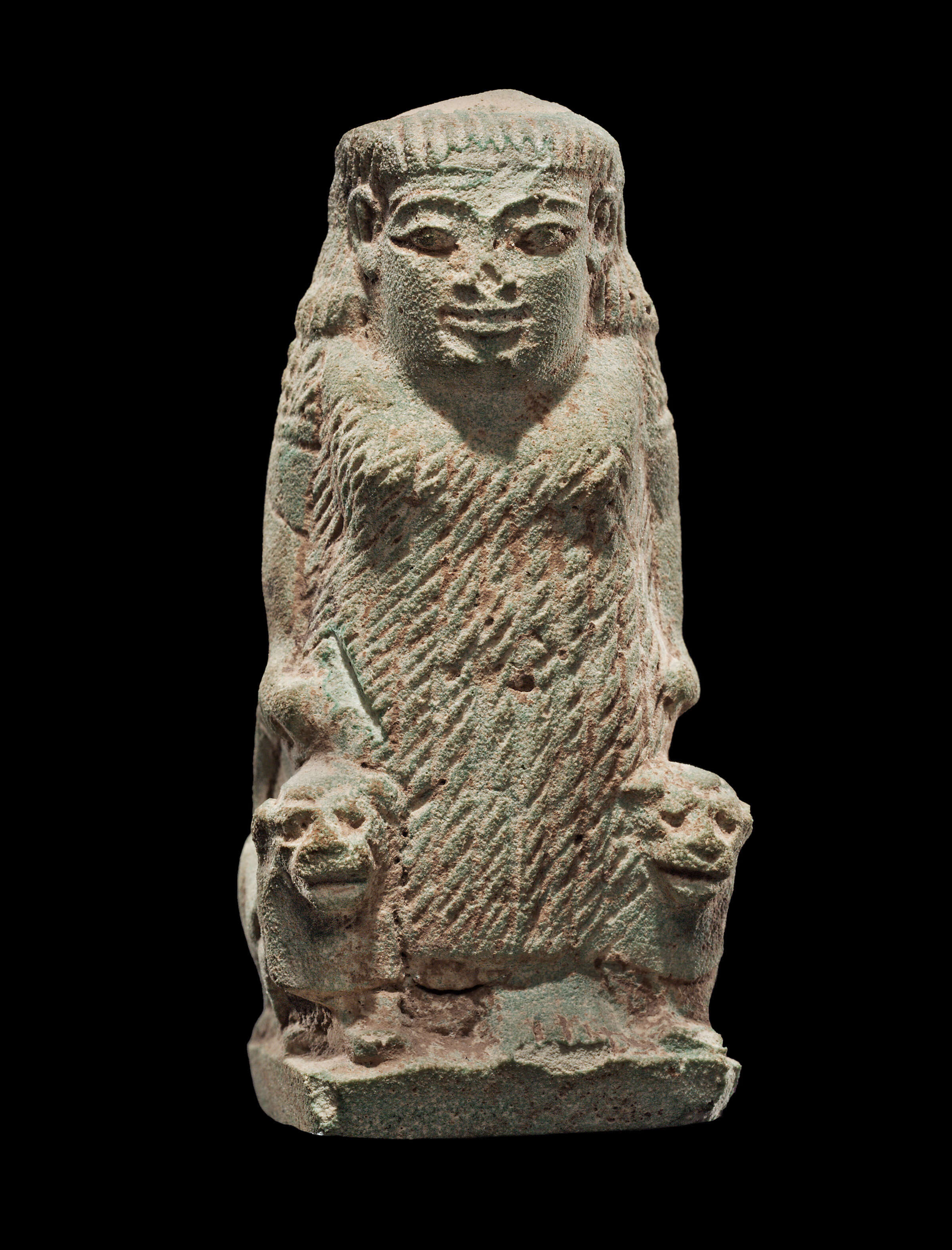Ancient Greek Faience Goddess of Animals




Ancient Greek Faience Goddess of Animals
Greek (Naucratis or Rhodes), end of the 7th – 6th century B.C.
Light blue faience
H: 7.6 cm
Serial: 25031
Provenance: Ex- US private collection, Colorado, acquired in London in 1996
Published: Faiences, Phoenix Ancient Art, Geneva-New York, 2011, no. 68
The vessel is in a good state of preservation, although it appears to have been partially repaired. The mouth, handle and right foot of the figure are now lost and the rough-looking surface is covered with a light blue glaze.
This vase, in the form of an elongated, slender alabastron, represents a young female figure with rather naive, squat shapes and “Egyptianizing” facial features. She is standing upright on a square thin base and holds in her hands the raised tail of two lions (or panthers), a gesture that translates her power of dominion over animals. Wild cats, much smaller in size than the female figure, walk next to her. The young woman is dressed in a short-sleeved, long tunic, striped with diagonal lines which cover her entire body, except for her toes. Her thick long hair that reaches her shoulders, encircles her head like a skullcap composed of small vertical braids.
Like the contemporary Greek alabastra and aryballoi, this small plastic vase was provided with a circular mouth, whose trace is still visible on the head of the woman, and a ribbon handle attached to the hair. The suspension ring, still visible on the hair, would have allowed the vessel to be suspended and/or transported.
In the Greek world, from the Archaic period especially, the female deity accompanied with two animals is most often named ποτνια θηρϖν (Potnia Theron), which means “mistress of wild animals”, and most often refers to Artemis, the goddess of hunting and of the wild natural world. Her iconography is not uniform, since the Potnia Theron would appear winged or wingless, standing upright, walking in the company of various animals (usually wild cats, fantasy animals, deer, birds, etc.).
Popular in all Greek regions (Rhodes, Crete, eastern and continental Greece, western colonies), as well as in Etruria, she was a domineering and protective goddess of the natural world, linked to animal and plant fecundity and, according to some authors, to the chthonic world as well.
This piece can probably be classified with the series of faience aryballoi and plastic vases, whose production is generally attributed to workshops located at Naucratis and/or on the island of Rhodes. Although the subject is exceptional here, there are, in this group of objects, some plastic vases that are typologically similar and mostly represent the god Bes (seated and holding a gazelle, a monkey holding its baby, a girl seated or holding a gazelle, etc.).





